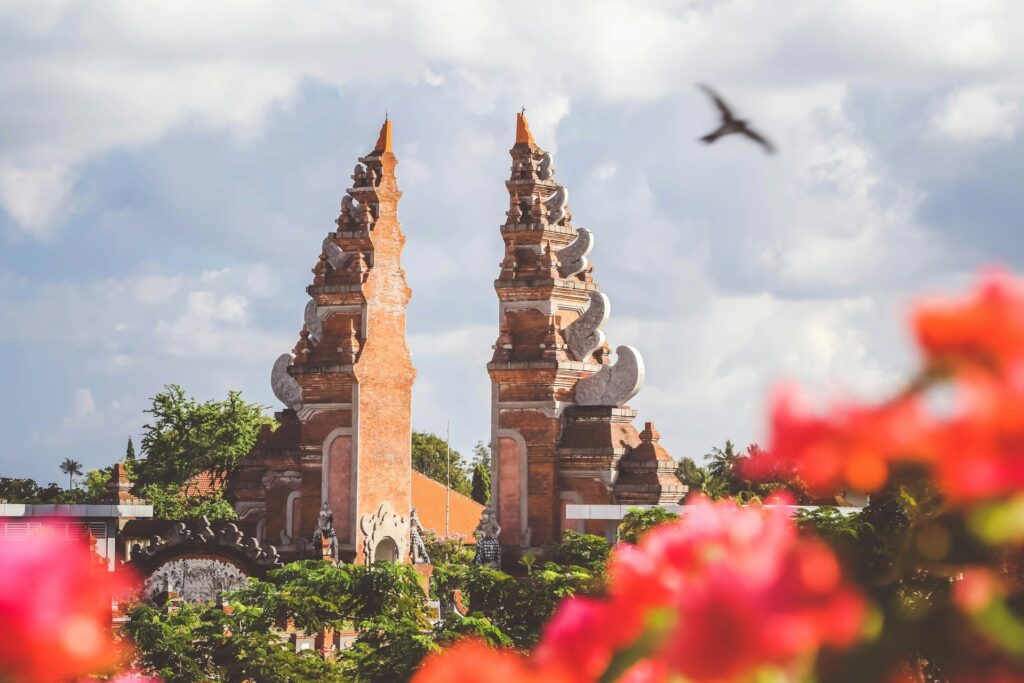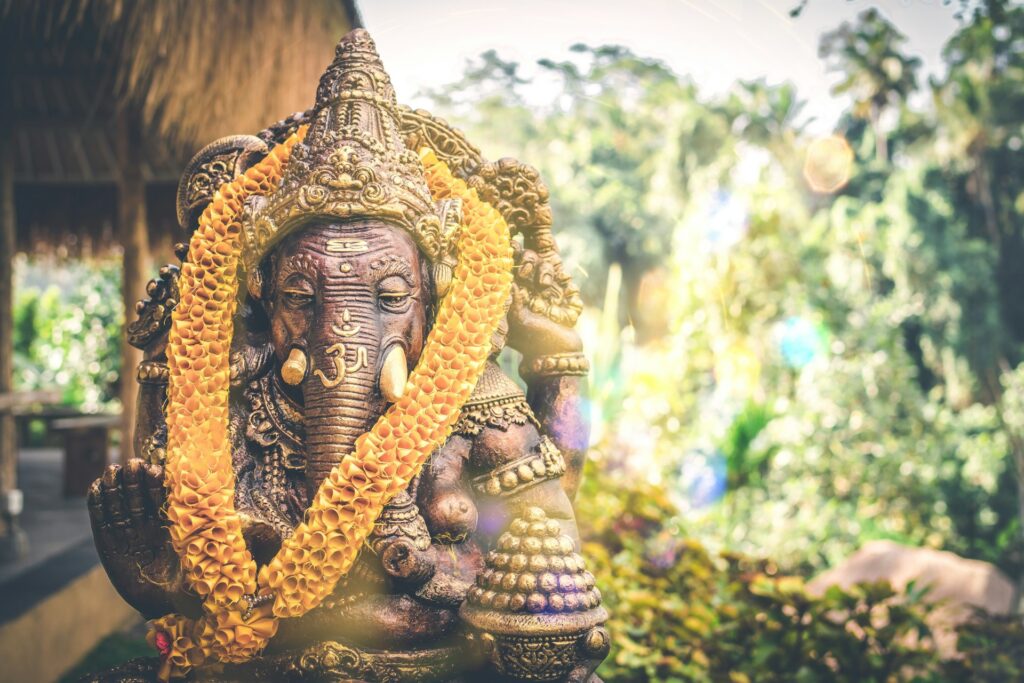
Bali is a treasure trove of experiences that cater to everyone, from wellness seekers and yogis to those ready to dive into the vibrant party scene.
As a digital nomad myself, I’ve found this enchanting island to be a perfect blend of beauty, culture, and community.
Whether you’re wandering through lush rice paddies, enjoying the serene beaches, or connecting with fellow travelers at a cozy café, Bali is sure to ignite your wanderlust.
If you’re a budget traveler or a backpacker looking to make the most of your trip without breaking the bank, you’ve come to the right place.
In this article, I’ll share the cheapest times to visit Bali, ensuring you enjoy all the island has to offer while keeping your expenses in check.
Get ready to plan an unforgettable adventure where your budget stretches further than you ever imagined!
In this article:

Understanding Travel Expenses in Bali
Traveling to Bali is an exciting adventure, but understanding the various expenses involved is crucial for budgeting effectively.
This article will guide you through the costs associated with different seasons, highlighting which expenses will vary and which will remain consistent.
We’ll explore the factors that influence prices year-round and discuss whether it’s worth planning your trip around peak and low seasons.
Variable Expenses: What Changes with the Seasons
When planning your trip, it’s important to recognize that certain expenses fluctuate based on the time of year:
- Flights: Airfare is highly susceptible to seasonal demand. Prices can soar during peak travel months, such as July and December, while the off-peak season offers more budget-friendly options.
- Accommodations: Hotel and lodging prices can increase significantly during the high season, especially in popular areas. Understanding these fluctuations can help you find the best deals.
- Activities and Excursions: Popular attractions may charge higher rates during peak periods. Off-peak travel often means lower prices and more flexibility in planning your itinerary.
Consistent Expenses: What to Expect Year-Round
While many expenses fluctuate, some costs remain relatively stable throughout the year:
- Food: Dining costs in Bali are generally affordable and don’t vary much with the seasons. You can enjoy local cuisine without breaking the bank, regardless of when you visit.
- Transportation: Local transportation costs, such as taxis or scooter rentals, tend to be consistent year-round. Budgeting for these expenses will help you navigate the island without unexpected costs.
WHAT INFLUENCEs Prices Throughout the Year in Bali?
Several factors can affect travel prices in Bali, including:
- Tourism Demand: High tourist influx during holiday seasons and school breaks leads to increased prices for flights, accommodations, and activities.
- Local Events and Festivals: Unique cultural events and festivals can draw crowds and influence pricing. Being aware of these can help you plan your visit accordingly.
- Weather Conditions: Seasonal weather changes can impact both travel demand and experiences, with travelers preferring the dry season for outdoor activities.

Comparing Expenses Based on Time of Year in Bali
When planning a trip to Bali, understanding the cost differences between peak and off-peak seasons can significantly impact your budget.
This comparison will break down the major expenses, including flights, accommodations, food, and activities, to help you make informed decisions.
Flights
Flight prices vary dramatically depending on the time of year.
For travelers flying from London, expect to pay around £650 from January to June, with prices rising to about £1,000 in July.
From August to November, fares drop back down to around £500, while December sees prices soar to over £1,000 due to holiday demand.
For those departing from Sydney, flights typically cost approximately AUD 200 year-round, but booking a month in advance can result in significant savings.
If you’re flying from Los Angeles (LAX), you can expect to pay around $500 from January to May, rising to $700 in June and July, before dropping back to $500 from August to November.
Similar to London, December fares are higher at around $700.
To secure the best prices, it’s advisable to book flights at least two weeks in advance from London and one month in advance from LAX.
Accommodation
Accommodation prices in Bali also fluctuate, particularly during peak times in December and July, when prices can increase by 20% or more.
For budget-friendly options, consider staying at places like Bali Stellar Capsules in Seminyak, where dormitory beds start at just $6 per night.
Booking accommodations closer to your travel date, ideally within six months, can lead to better deals and increased availability.
Activities
The cost of activities and excursions can also vary with the seasons.
During peak season, popular attractions and tours may charge higher rates due to increased demand.
For instance, water sports and guided tours are often more expensive in July and December.
Conversely, visiting during the shoulder or low seasons can lead to discounts and more opportunities for negotiation.
By understanding these cost comparisons and planning accordingly, you can maximize your budget and enjoy a fantastic experience in Bali, regardless of when you choose to visit.

Festivals and Their Impact on Travel Prices in Bali
Nyepi (Day of Silence) – March
Nyepi, celebrated in March during the full moon, marks the Balinese New Year with a day of fasting, meditation, and silence.
Festivities begin the day before with vibrant parades and ogoh-ogoh effigies, drawing many tourists and increasing travel prices.
It’s wise to book accommodations well in advance.
Galungan and Kuningan – Varies (Every 210 Days)
Galungan, occurring every 210 days, celebrates the triumph of good over evil over ten days, culminating in Kuningan.
Homes and temples are decorated with penjor, creating a festive atmosphere, but expect moderate price increases for travel and accommodations.
Planning ahead is essential to enjoy these celebrations.
Ubud Food Festival – June
Held in June, the Ubud Food Festival showcases Bali’s culinary scene with cooking demos and tastings from local and international chefs.
Due to its popularity, travel prices may rise during the event, so booking in advance is recommended to secure better rates.
Bali Arts Festival – June to July
From mid-June to mid-July, the Bali Arts Festival highlights the island’s rich culture through dance, music, and art exhibitions.
With daily performances at various venues, expect an uptick in travel costs as tourists flock to the festivities; early booking is advisable.
Sanur Village Festival – August
The Sanur Village Festival in August celebrates the area’s cultural heritage with art performances and culinary fairs.
Its popularity can lead to increased travel prices, especially among families, so planning your trip around the festival dates is a smart move for budget-friendly options.
Ubud Writers & Readers Festival – October
Taking place in October, the Ubud Writers & Readers Festival attracts global literary enthusiasts for talks and workshops.
This influx can drive up accommodation prices, so it’s wise to book early to secure a good spot.
Balinese Kite Festival – July
The Balinese Kite Festival in July features colorful kites in a friendly competition, creating a lively beach atmosphere.
While enjoyable, the event can slightly raise travel prices due to visitor numbers, so reserving accommodations in advance is recommended.
Christmas and New Year’s Eve – December
The holiday season in December sees a surge in tourists celebrating Christmas and New Year’s Eve, leading to higher travel costs.
If visiting during this peak period, expect crowds and book your plans months ahead for the best rates.
Hindu Ceremonies and Temple Festivals – Year-Round
Bali hosts various Hindu ceremonies and temple festivals throughout the year, providing unique insights into local culture.
These events may offer budget travel opportunities, depending on timing and location, allowing for more authentic experiences without tourist markups.

How Weather Affects Travel Costs in Bali
Traveling to Bali can vary significantly in cost depending on the season and weather conditions.
Understanding the differences between the wet and dry seasons can help you plan your trip more economically.
The Wet Season: November to March
The rainy season in Bali typically runs from November to March, characterized by frequent rain and higher humidity, typical of the region’s tropical climate.
While this might seem like an unappealing time to visit, it actually offers a more budget-friendly experience, making it the low season for travel.
Many travelers shy away from Bali during these months, resulting in lower prices for flights and accommodations.
Average temperatures remain warm, but occasional downpours can bring cooler temperatures to the island.
Despite the rain, the landscape is lush and vibrant, making it an ideal time for those looking to explore Bali’s natural beauty without the crowds.
Travelers may also find that local attractions, such as spas and cozy cafes, are less busy, allowing for a more relaxed experience.
However, it’s essential to stay flexible with your plans, as some outdoor activities may be affected by weather conditions.
The Dry Season: April to October
In contrast, the dry season, running from April to October, typically features clear skies, sunny weather, lower humidity, and minimal rainfall.
This period is considered the best time of year for outdoor activities such as hiking, beach days, and water sports, including surfing and scuba diving.
As a result, Bali attracts a larger influx of tourists, leading to higher travel costs during these months of perfect weather.
While the weather is more predictable and outdoor experiences are abundant, visitors should expect increased prices for flights and accommodations, especially during peak travel months like July and August.
Booking well in advance is advisable if you plan to travel during Bali’s best weather to secure the best deals and make the most of the dry weather.
Shoulder Seasons: Finding the Sweet Spot
The shoulder season is a great time to travel to Bali.
Shoulder seasons occur between the wet and dry seasons (April to June and September to October), present a sweet compromise.
During these months, travelers can enjoy decent weather, fewer crowds, and lower prices.
It’s a great month for budget-conscious visitors who want to experience the beauty of Bali without the hustle and bustle of peak tourist seasons.
Additionally, many local events and festivals occur during these distinct seasons, providing unique cultural experiences at a lower cost.
While there may still be occasional rainy days, the overall atmosphere allows for a more enjoyable and authentic exploration of the island.

Planning Around Weather Conditions
Ultimately, understanding how weather conditions influence travel costs in Bali can help you make informed decisions about when to visit.
Whether you prefer the lush landscapes of the wet season, the sunny days of the dry season, or the balance of the shoulder seasons, being aware of these factors will allow you to plan a memorable and budget-friendly trip to this beautiful island.

Is Traveling to Bali in the Off-Season Worth It?
Traveling to Bali during the off-season, from November to March or during the shoulder seasons, offers significant advantages that can enhance your experience.
With lower costs for flights, accommodations, and activities, you can stretch your budget further while enjoying popular attractions without the crowds.
This quieter time allows for more authentic interactions with local culture, as you can witness unique festivals and ceremonies.
The lush landscapes, rejuvenated by occasional rain, create a stunning backdrop for exploration.
Plus, with fewer tourists, you have the flexibility to adapt your itinerary and discover hidden gems at your own pace.
Even Nusa Penida, typically one of the more expensive spots in Bali, becomes much more affordable during the off-season, making it the perfect time to explore its breathtaking beauty without breaking the bank.
Embrace the charm of the island of the gods in its off-season, and you may find it even more magical than during peak times!

Tips for Saving Money Year-Round in Bali
Finding Affordable Flights
To save money while traveling in Bali, I always start by booking flights.
Flexibility with your travel dates is key, and I recommend using Skyscanner to find the cheapest options available.
Being open to flying on weekdays or during off-peak times can significantly reduce your airfare costs, making it easier to stick to your budget.
Additionally, consider subscribing to fare alerts to stay updated on price drops.
Budget-Friendly Accommodations
Once I have my travel dates set, I look for accommodations, often choosing the most budget-friendly place that still seems enjoyable.
My go-to site is Hostelworld, where I can find great hostels that cater to budget travelers.
I also use Booking.com occasionally for additional options.
Whether you prefer a vibrant hostel or a cozy guesthouse, there are plenty of choices that won’t break the bank, allowing you to spend more on experiences like water sports and scuba diving.
eat Like a Local
When it comes to dining, steer clear of touristy restaurants; instead, seek out local spots that aren’t trendy or located in busy areas.
You’ll discover some of the best places to eat by wandering the streets or asking locals where they go for their meals.
If you’re feeling adventurous, asking for recommendations can lead you to hidden gems serving authentic Balinese cuisine at reasonable prices.
Enjoying local food not only saves money but also enhances your cultural experience.
Tips on Bargaining and Tipping
While I don’t often haggle due to the low prices in Bali, it can be a fun experience if you’re into it.
Markets can be a great place to practice your bargaining skills while picking up souvenirs or trying local crafts.
Personally, I tend to tip the Balinese people for their service, as it feels right, but I’ve noticed they often decline.
What might seem like a small amount to us can mean a lot to them, so be mindful of this cultural nuance as you navigate your interactions.
Timing Your Adventures
Finally, consider the best time of year to visit Bali for specific activities.
The dry season, from April to October, is ideal for outdoor adventures and water sports, including scuba diving.
Planning your trip around these months can enhance your experience and save you money on excursions, as many operators offer discounts during the shoulder seasons.
By combining smart travel choices with a little flexibility, you can enjoy all that Bali has to offer without overspending.

FAQ
What is the cheapest month to travel to Bali?
The cheapest month to travel to Bali is February, as it falls within the wet season and experiences lower tourist traffic.
What is the best month to visit Bali?
The best month to visit Bali is typically April or October, during the shoulder seasons, when the weather is pleasant and crowds are thinner.
What time is off season in Bali?
The off season in Bali generally runs from November to March, coinciding with the wet season when tourism is lower.
What is the most expensive month in Bali?
The most expensive month in Bali is December, primarily due to the holiday season when travel demand peaks.
Is Bali really cheap to visit?
Yes, Bali is generally considered cheap to visit, offering affordable accommodations, food, and activities, especially compared to Western countries.
Is $100 a day enough for Bali?
Yes, $100 a day is usually enough for budget travelers in Bali, covering accommodation, meals, and some activities.




